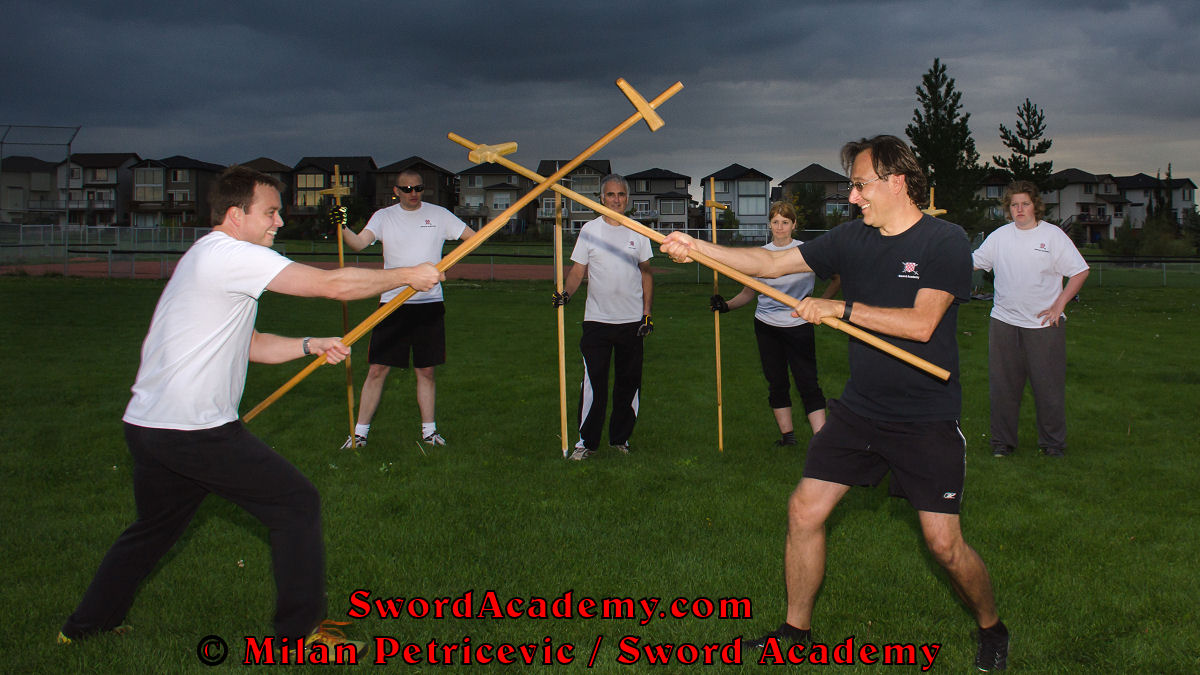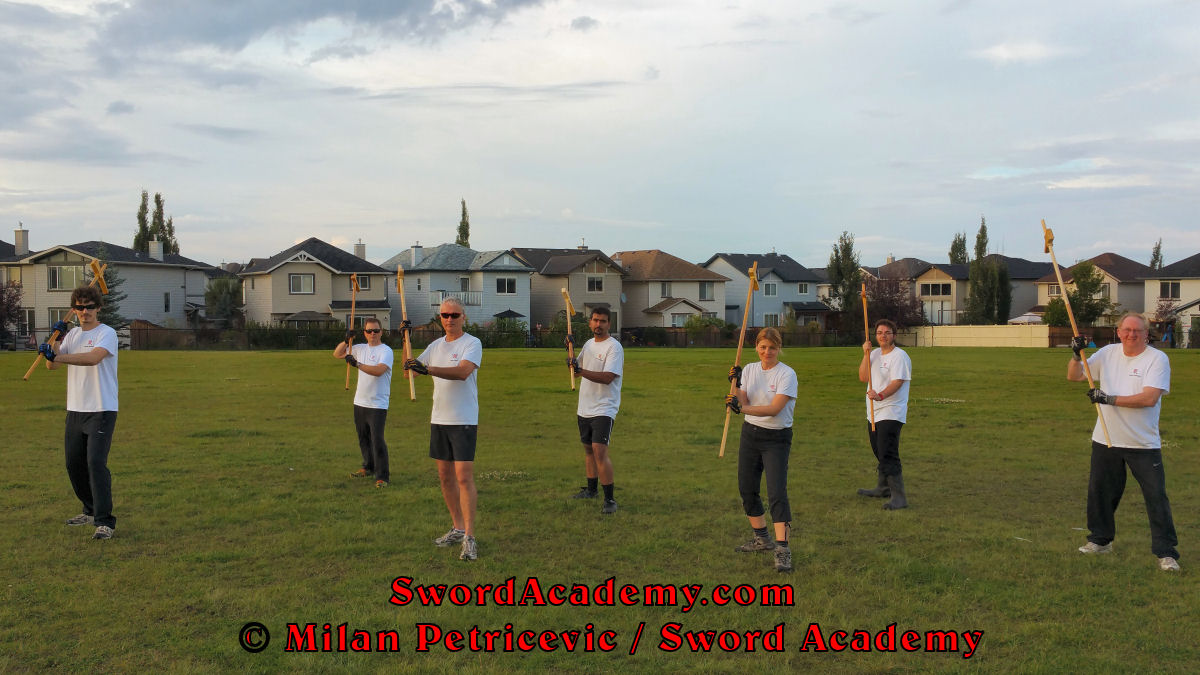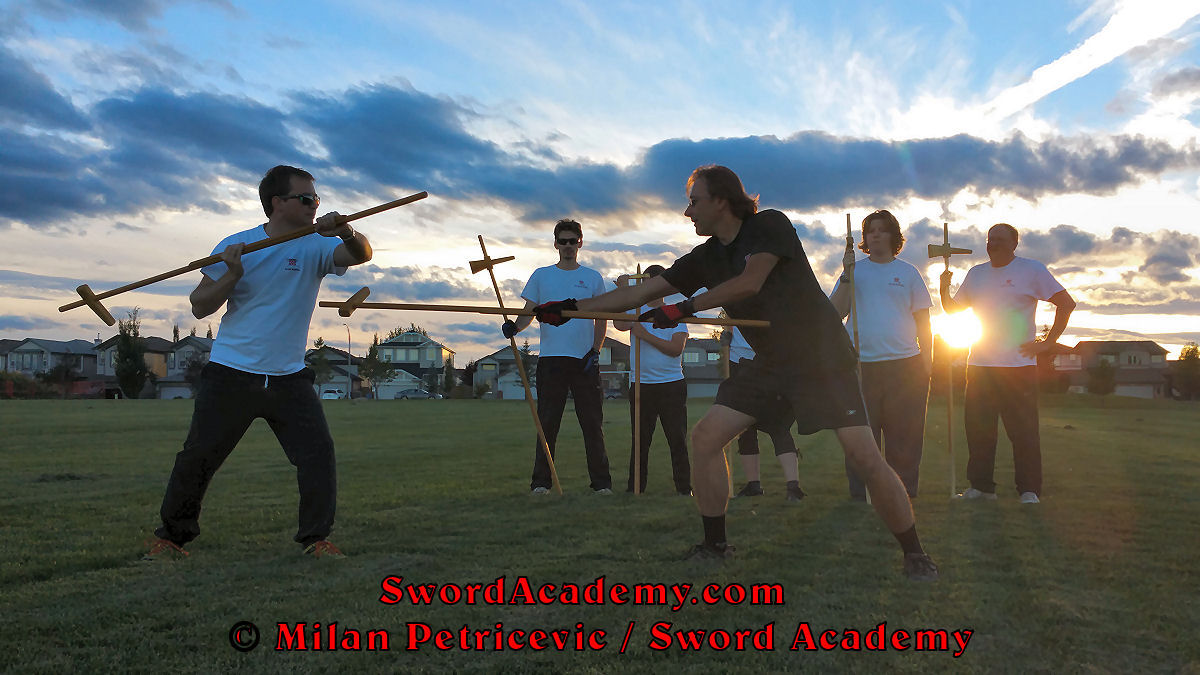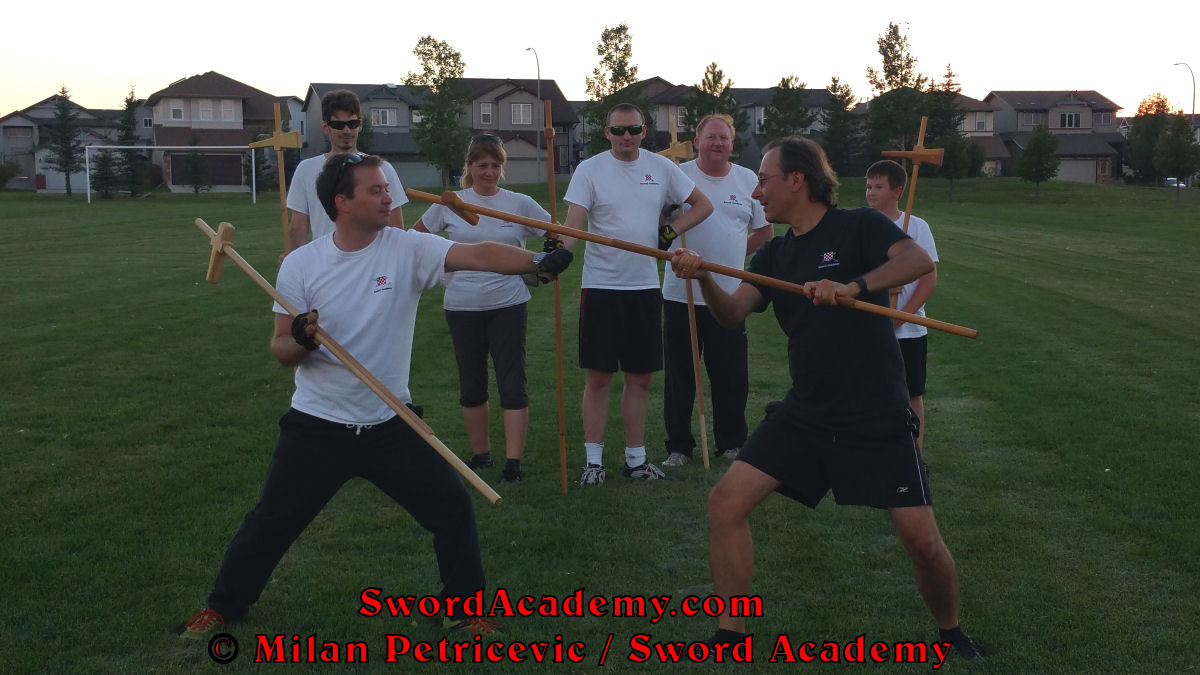Pole Arms

Pole Arms Usage and History
Pole arms were in use through much of the Middle Ages, but became increasingly popular toward the end of the Medieval period, when armored knights wearing plate armor would fight one another with poleaxes both in battle field and in single combat at tournaments. Though this is the best documented form of pole arm combat in terms of historical sources, we also have sources on combat with halberds and forest bills. There many other forms of pole weapon such as glaive, partisan and others that have been in use both on the battle field and in single combat for centuries. Renaissance combat instructors have included some instructions on their use.
When knights would battle with poleaxes, the object was not always to injure or kill, but to force their opponent to yield (so he can be captured and ransomed). A poleaxe can impact plate armor strongly and pull off individual plates exposing vulnerable body parts.
When attempting to kill with a poleaxe, it was used to facilitate throws and the back end or queue could be thrust into the weak points or joints of armor. In those situations, the weight of the poleaxe behind the curved spike on the back, called bec de faucon, would puncture through armor and helmets, bringing serious injury to the opponent.
Halberds were also commonly used as battle field weapon and with their long reach were very effective verses swordsmen and other opponents with shorter range. They can be used to deliver dreadful chopping blows or employed to threaten with the spiked head like a spear.
Bills were common in Medieval England and functioned similarly to halberds during times of war. They were also used in single combat between unarmored foes, where they are used like a staff, but with a deadly striking head.
Pole Arms Components and Construction
Though there are many types of pole arms, they all share certain characteristics. Pole arms all have a head, a shaft and a queue. The heads are made of a combination of hooks, hammers, blades and spikes and often would have a variety of each.
Halberd commonly has an axe blade with a spike on the top and spike or on the back edge. The shaft is built of wood, reinforced with steel and often has a hand grip protected by steel rings. The queue is a steel spike on the butt of the halberd.
A poleaxe commonly has an hammer with a spike at the top and curved spike on the back edge (called bec de faucon). The shaft is built of wood, reinforced with steel and often has a hand grip protected by steel rings. The queue is a steel spike on the butt of the poleaxe.
Training Tools
At this time at Sword Academy our training is mainly focused around the poleaxe and halberd.
Due to our philosophy (and its application to training) Sword Academy uses steel weapons exclusively in our Western Martial Arts (WMA) / Historical European Martial Arts (HEMA) curriculum as they have many benefits over wooden, synthetic or other materials.
In our curriculum Sword Academy studies both medieval and renaissance techniques of pole arm combat inspired by French, German, Italian and other sources.




